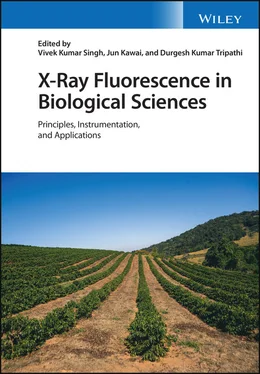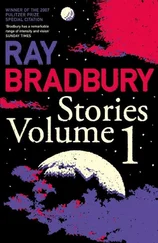X-Ray Fluorescence in Biological Sciences
Здесь есть возможность читать онлайн «X-Ray Fluorescence in Biological Sciences» — ознакомительный отрывок электронной книги совершенно бесплатно, а после прочтения отрывка купить полную версию. В некоторых случаях можно слушать аудио, скачать через торрент в формате fb2 и присутствует краткое содержание. Жанр: unrecognised, на английском языке. Описание произведения, (предисловие) а так же отзывы посетителей доступны на портале библиотеки ЛибКат.
- Название:X-Ray Fluorescence in Biological Sciences
- Автор:
- Жанр:
- Год:неизвестен
- ISBN:нет данных
- Рейтинг книги:5 / 5. Голосов: 1
-
Избранное:Добавить в избранное
- Отзывы:
-
Ваша оценка:
- 100
- 1
- 2
- 3
- 4
- 5
X-Ray Fluorescence in Biological Sciences: краткое содержание, описание и аннотация
Предлагаем к чтению аннотацию, описание, краткое содержание или предисловие (зависит от того, что написал сам автор книги «X-Ray Fluorescence in Biological Sciences»). Если вы не нашли необходимую информацию о книге — напишите в комментариях, мы постараемся отыскать её.
Discover a comprehensive exploration of X-ray fluorescence in chemical biology and the clinical and plant sciences X-Ray Fluorescence in Biological Sciences: Principles, Instrumentation, and Applications
X-Ray Fluorescence in Biological Sciences: Principles, Instrumentation, and Applications
X-Ray Fluorescence in Biological Sciences — читать онлайн ознакомительный отрывок
Ниже представлен текст книги, разбитый по страницам. Система сохранения места последней прочитанной страницы, позволяет с удобством читать онлайн бесплатно книгу «X-Ray Fluorescence in Biological Sciences», без необходимости каждый раз заново искать на чём Вы остановились. Поставьте закладку, и сможете в любой момент перейти на страницу, на которой закончили чтение.
Интервал:
Закладка:
Part IV(Beginner's Guide) consists of four (04) chapters which cover the basics theory of XRF and historical fundamentals of XRF instruments, quantitative analysis methods, electronics and instrumentation, methods of using XRF to study biological samples. Chapter 17introduces the atomic physics of the XRF spectrometry which is very useful for beginners to learn for its applications. Chapter 18includes general principles, production, and detectors of X‐ray waves. Chapter 19introduces general discussion on quantitative analysis methods and procedures which is the principal subject of XRF spectroscopy. Chapter 20deals with the crucial aspects concerning the operation and optimization of electronics for X‐ray detection and fluorescence spectrometry.
Part V(Application to Biological Samples) consists of eleven (11) chapters which include the different biological applications of XRF spectrometry. Chapter 21highlights the theoretical basics of the EDXRF followed by some relevant case studies such as elemental profiling for ionomic studies and food authenticity studies. Chapter 22deals the application of XRF including TXRF to milk and dairy products. Chapter 23includes the literature review on the elemental concentration analysis of medical plants using XRF technique. Chapter 24deals with the application of XRF in animal and human cell biology. Chapter 25covers a variety of biomedical applications using XRF spectrometry. Chapter 26describes the usefulness of XRF technique to analyze uranium (U) in blood extracted from wounds. Chapter 27highlights the use of XRF for the analysis of human hair. Chapter 28discusses the potential utility of XRF methods to analyze different kinds of biological samples such as calcified/dental tissues, gallbladder and kidney stones, hair, nails, blood, urine, and clinical samples. Chapter 29describes the principles of using WDXRF for the chemical analysis of plant samples. Chapter 30covers the use and application of XRF in medicinal biology. Chapter 31describes in details the use of XRF in pharmacology.
Part VI(Special Topics and Comparison with Other Methods) consists of eight (08) chapters. This section includes some chapter based on special topics and comparisons of XRF with other techniques. Chapter 32describes the XRF technique and state‐of‐the‐art related techniques specifically as they regard the study of teeth, tartar, and oral tissues. Chapter 33describes in details the principles, theory and applications of WDXRF spectrometry. Chapter 34describes the chemometric processing of XRF data which is one of the most important steps in XRF spectrometry. Chapter 35briefly describes the applications of X‐ray crystallography in medicinal biology. Chapter 36describes the historical fundamentals of X‐ray instruments and present trends in the field of biological science. Chapter 37, the application and development of XRF spectrometry is discussed for biological objects in Mongolia. Chapter 38highlights the developments and use of XRF techniques to study arsenic in biological samples in Japan. Chapter 39is the most important chapter which describes about the current trends and future prospects of XRF technique.
Four chapters (17, 18, 25, and 30) are at very basic level, which will be useful for biologists to understand XRF and its biological applications. The priority is understandable by trading‐off the accuracy or precise expression in these four chapters.
We would like to take this opportunity to express our gratitude to all of the authors for their excellent contributions in this book. We hope the readers will enjoy this book “X‐Ray Fluorescence in Biological Sciences: Principles, Instrumentation and Applications” and that it contributes to the continued instrumental developments of XRF and biological applications. We also hope that it encourages and inspires the beginners to the field in exploring the multifaceted aspects of XRF.
Finally, the critical evaluations and recommendations by the reviewers for the applicability of the XRF methods to biological samples will make this book a valuable asset for anyone employing or improving upon these techniques.
December, 2021
Dr. Vivek Kumar Singh
Professor Jun Kawai
Dr. Durgesh Kumar Tripathi
1 X‐Ray Fluorescence and Comparison with Other Analytical Methods (AAS, ICP‐AES, LA‐ICP‐MS, IC, LIBS, SEM‐EDS, and XRD)
Kanishka Rawat1, Neha Sharma2, and Vivek Kumar Singh3
1 Applied Nuclear Physics Division, Saha Institute of Nuclear Physics, Kolkata, West Bengal, India
2 School of Physics, SMVD University, Katra, 182320, Jammu and Kashmir, India
3 Department of Physics, University of Lucknow, Lucknow, 226007, Uttar Pradesh
1.1 Introduction
Most highly complex structured materials require good analytical techniques that can furnish information about the spatially distributed elements in the materials and permit the examination of their structures. Many analytical methods exist which provide insight into the chemical compositions and structure of the materials. Each technique has its own advantages and limitations in terms of analytical performance, sensitivity, accuracy, and applicability. X‐ray fluorescence (XRF) is an elemental analysis technique that is used for elemental and chemical analysis of various materials including glass, metals, and ceramics. XRF is also seeing increased application and greater utility in the analysis of biological materials [1–3]. In XRF analysis, X‐ray photons characteristic of the elemental makeup of the sample material are emitted as it is bombarded with highly energetic X‐ray beams [1–3]. In most circumstances, XRF is considered non‐destructive. The other factors responsible for its wide adoption are low cost of sample preparation, relative ease, and stability.
Several elemental analysis techniques such as laser induced breakdown spectroscopy (LIBS), inductively coupled plasma mass spectroscopy (ICP‐MS), ion chromatography (IC), etc. are widely used for the analysis of materials, particularly biological samples such as tooth, bone, nail, stone, blood, cancerous tissues, etc. [4–7]. There are many other similar methods such as time‐of‐flight secondary ion mass spectrometry (TOF‐SIMS) and proton‐induced X‐ray emission spectroscopy (PIXE) that have many important biomedical applications. Inductively coupled plasma (ICP) is also one of them, which is a plasma source wherein energy is supplied by electric currents generated by electromagnetic induction [3]. ICP has numerous applications such as in nuclear technologies, isotopic speciation, and detection of chemical elements. IC separates polar molecules and ions on the basis of their chemical affinity with regards to the ion exchanger [3]. It can be operated on all charged molecules, like bio‐molecules (especially amino acids), large proteins, small nucleotides etc. It has many clinical and industrial applications. In this chapter, we present briefly the position of XRF including micro‐XRF (μ‐XRF) among some other the analytical methods including ICP‐AES/MS, IC, LIBS, TOF‐SIMS, and PIXE.
1.2 Analytical Capabilities of XRF and Micro‐XRF
XRF spectrometry is generally used in two different kinds of configurations: wavelength dispersive mode (WD‐XRF) and energy dispersive mode (EDXRF) [8, 9]. Both of them have different ways of detecting and analyzing emitted fluorescent X‐ray photons. ED‐XRF spectrometers have detection systems which examine the distinct energies of the X‐ray photons coming directly from the sample material. The XRF spectrum is generated by detecting and plotting the relative count numberings of X‐rays at each energy value. The energy dispersive detectors basically involve the creation of electron–hole pairs in semiconductor materials (Si). After the emergence of silicon drift detectors (SDD), EDXRF is mainly used. As compared with EDXRF, WDXRF is quite expensive and is not needed for testing materials for steel industry or ceramics industry, for which EDXRF is enough. In recent years, EDXRF leads over WDXRF and is a powerful tool for elemental analysis to determine major, minor, and trace elements in biological samples [3]. EDXRF spectrometers are simpler in design, smaller, and more cost effective than other technologies. Examples of some common EDXRF applications include: quantifying atomic elements in: food, animal feed, cosmetics, woods, toothpaste, cement, kaolin clay, granular catalysts, ores, and many others.
Читать дальшеИнтервал:
Закладка:
Похожие книги на «X-Ray Fluorescence in Biological Sciences»
Представляем Вашему вниманию похожие книги на «X-Ray Fluorescence in Biological Sciences» списком для выбора. Мы отобрали схожую по названию и смыслу литературу в надежде предоставить читателям больше вариантов отыскать новые, интересные, ещё непрочитанные произведения.
Обсуждение, отзывы о книге «X-Ray Fluorescence in Biological Sciences» и просто собственные мнения читателей. Оставьте ваши комментарии, напишите, что Вы думаете о произведении, его смысле или главных героях. Укажите что конкретно понравилось, а что нет, и почему Вы так считаете.











